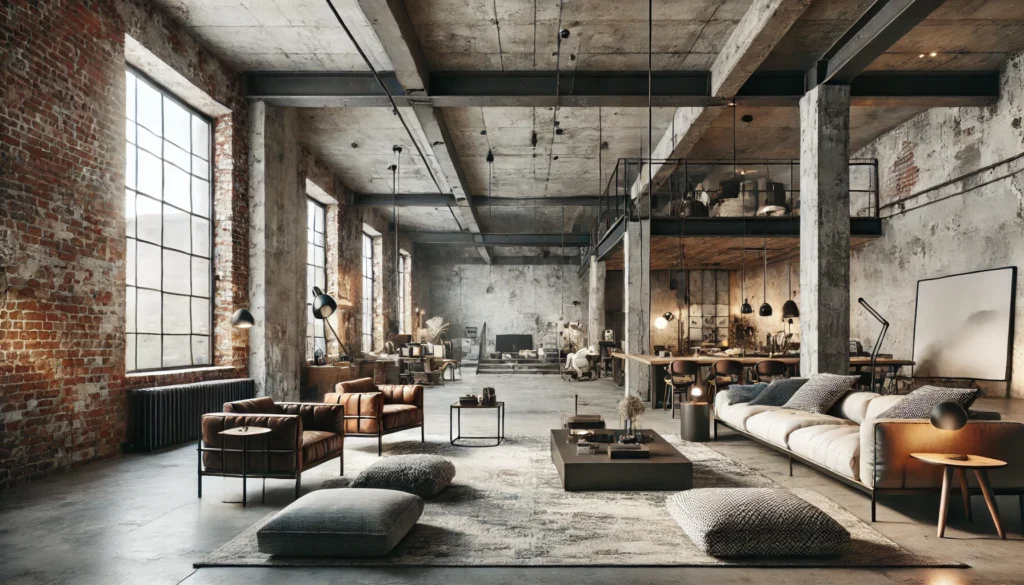The industrial loft style, with its raw, rugged charm, has been a beloved interior design trend for years. Drawing inspiration from urban settings, factories, and warehouses, it combines utilitarian elements with modern aesthetics. In 2025, this style is evolving into a more refined version, where raw materials meet sleek, contemporary finishes. If you’re a fan of exposed brick, metal accents, and open spaces, here’s how you can incorporate the updated industrial loft style into your home, making it both cozy and cutting-edge.
1. What is Industrial Loft Style?
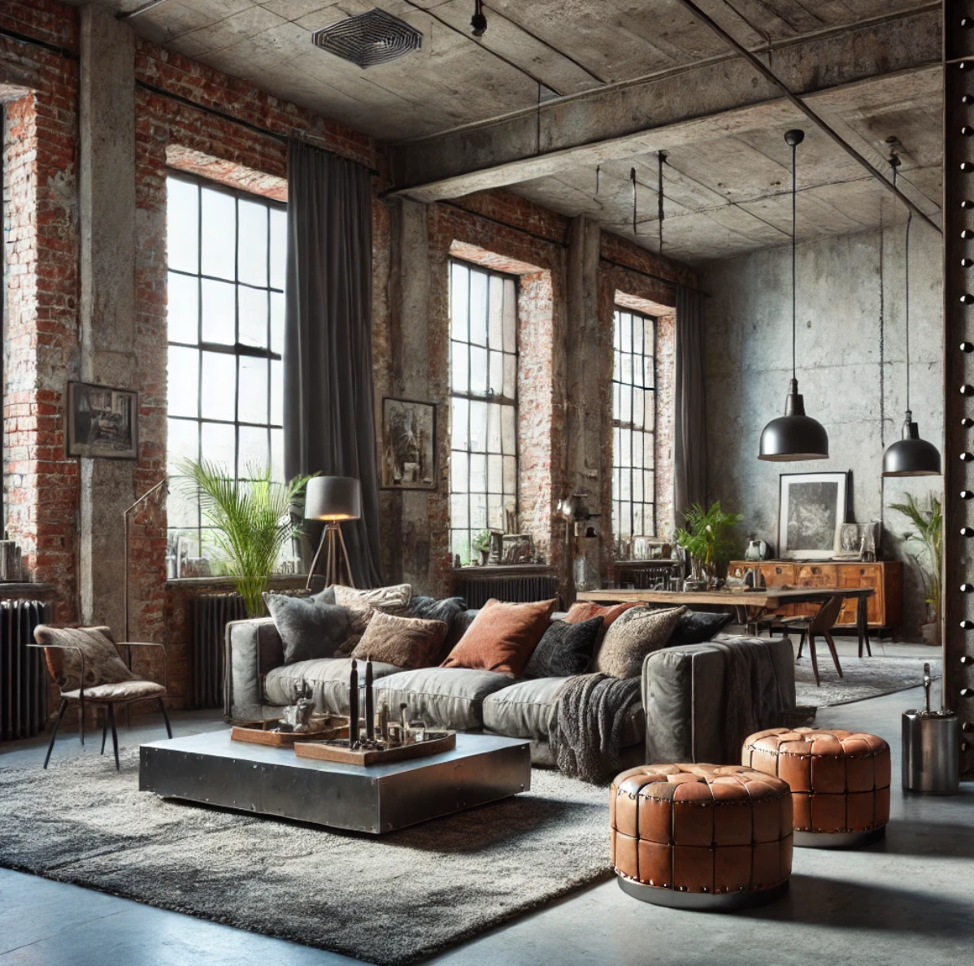
At its core, industrial loft style takes cues from the historical use of industrial spaces converted into living areas, such as former factories and warehouses. This design aesthetic embraces the structural elements of a building, showcasing raw materials like brick, concrete, wood, and metal.
The key features of industrial loft design include:
- Exposed brick walls and structural beams
- Open floor plans that offer spacious, flexible living areas
- Metal accents like steel or iron in furniture and lighting
- Neutral color palettes with shades of gray, black, brown, and white
- Large windows that allow natural light to flood in
In 2025, while the foundational elements remain the same, there’s a shift toward incorporating more refined details without losing the rugged appeal of the industrial loft.
2. Exposed Materials: Embracing Raw Textures

One of the hallmark features of industrial loft style is the use of raw, unfinished materials. Exposed brick walls, weathered wood, and concrete floors are essential in capturing the essence of this design. In 2025, these materials are still dominant, but they are paired with smoother, more polished surfaces for a balanced look.
For example, a living room with an exposed brick wall can be softened with a plush velvet sofa, or concrete floors can be complemented by a high-pile area rug. The goal is to strike a balance between the rough, industrial elements and more refined, luxurious finishes.
Pro tip: Don’t be afraid to leave some materials raw and exposed, but introduce softer textiles like wool, leather, and silk to create a sense of comfort within the industrial setting.
3. Open Spaces and High Ceilings: Expanding Your Living Area
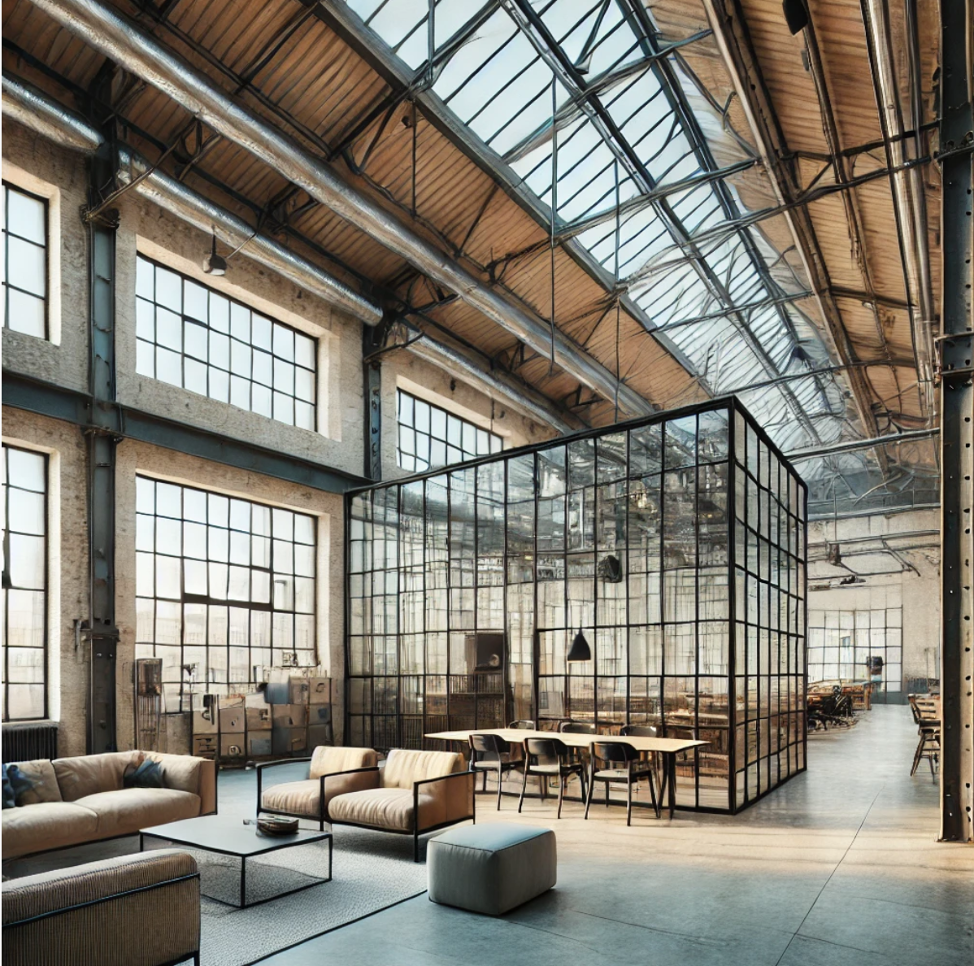
Industrial lofts are known for their open floor plans and high ceilings, creating a sense of expansiveness and freedom. In 2025, homeowners are taking full advantage of these spaces by using multifunctional furniture that can adapt to various activities, like convertible sofas or modular storage units.
To maintain the loft’s openness, designers are opting for subtle zoning techniques, like open shelving units, rugs, or half walls to delineate different areas within the same space. High ceilings remain a crucial aspect of the industrial loft style, allowing for large light fixtures or oversized art pieces that add visual interest without cluttering the space.
Pro tip: Use room dividers that don’t obstruct the flow of light, such as metal-framed glass partitions or open shelving units, to keep the space airy and bright while defining different zones.
4. Metal Accents: A Modern Touch on Industrial Roots
The use of metal is central to the industrial loft style. Stainless steel, black iron, and brushed nickel can be seen in furniture frames, lighting fixtures, and even kitchen appliances. In 2025, metals are being used in more creative ways, often with a sleek, refined finish.
Consider incorporating custom metal staircases with minimalist railings or metal-framed windows that give your space a modern edge. For furniture, metal coffee tables, stools, and shelving units create a sense of industrial toughness, while high-gloss finishes or sleek lines offer a contemporary twist.
Pro tip: Incorporate metal elements sparingly and strategically to avoid overwhelming the space. Metal accents can be paired with softer, warmer materials like wood or fabric to create contrast.
5. Refined Furniture: Blending Comfort and Style
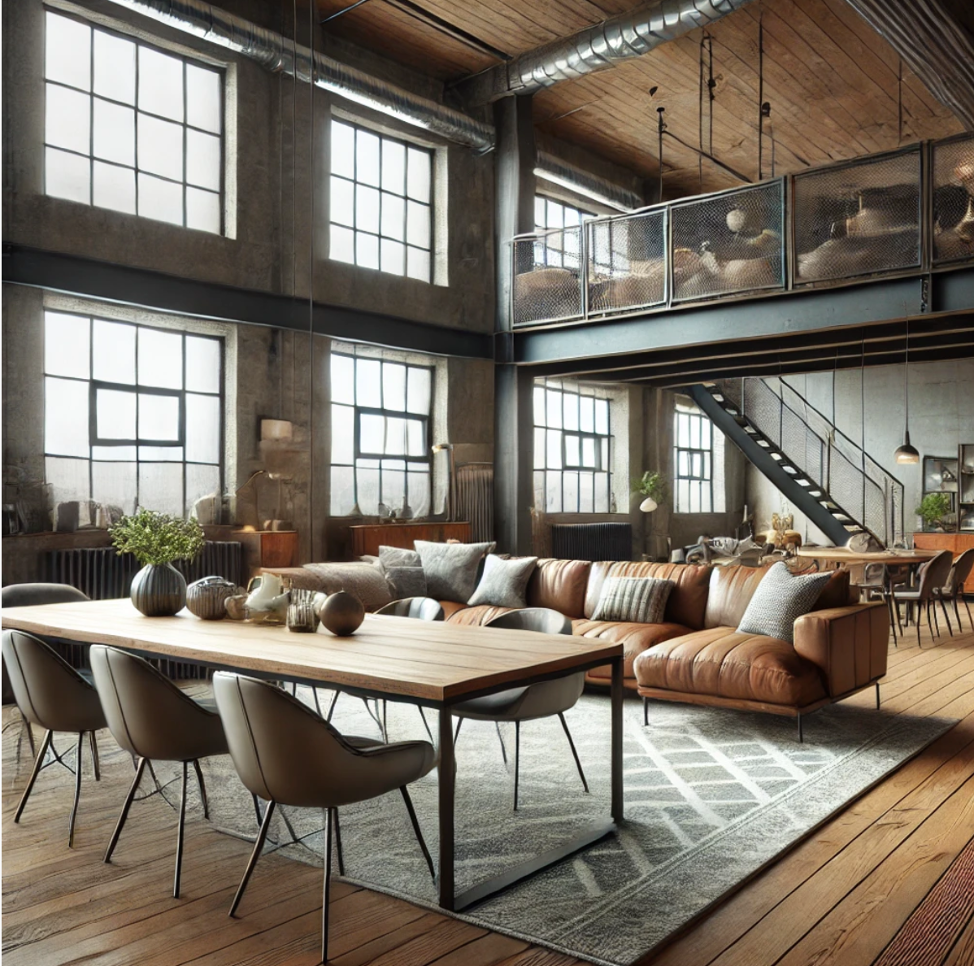
While industrial loft style is often associated with utilitarian, no-frills furniture, 2025 is about bringing more comfort into the space without losing the industrial essence. Furniture with clean lines and functional designs still play a key role, but there’s a greater focus on comfort and warmth.
Think leather sectional sofas with deep seating, upholstered dining chairs in neutral tones, or wooden dining tables paired with sleek, metal chairs. The idea is to create a living space that’s functional and inviting, with furniture that combines raw materials and refined craftsmanship.
Pro tip: Opt for oversized furniture pieces that can fill the vast, open spaces typical of lofts. Look for items that combine both rugged and polished elements, like a large wooden table with a steel frame or a soft, plush rug over concrete floors.
6. Statement Lighting: Industrial, but Elevated

Lighting plays a vital role in industrial loft design, where statement fixtures often steal the show. In 2025, classic industrial lighting like Edison bulb chandeliers, pendant lights, and track lighting are evolving to become more refined, blending industrial rawness with elegance.
Large metal pendant lights with sleek finishes, modernized Edison bulbs, and minimalist floor lamps are all perfect for elevating the industrial look. You can also play with contrasting styles, such as pairing a rugged steel pendant light over a sleek marble kitchen island to create an interesting juxtaposition.
Pro tip: Choose lighting fixtures that complement both the raw and refined aspects of your space. Look for statement pieces that add drama, like oversized pendant lights in metal or glass, or vintage-inspired chandeliers with a modern twist.
7. Neutral Color Palettes with Depth
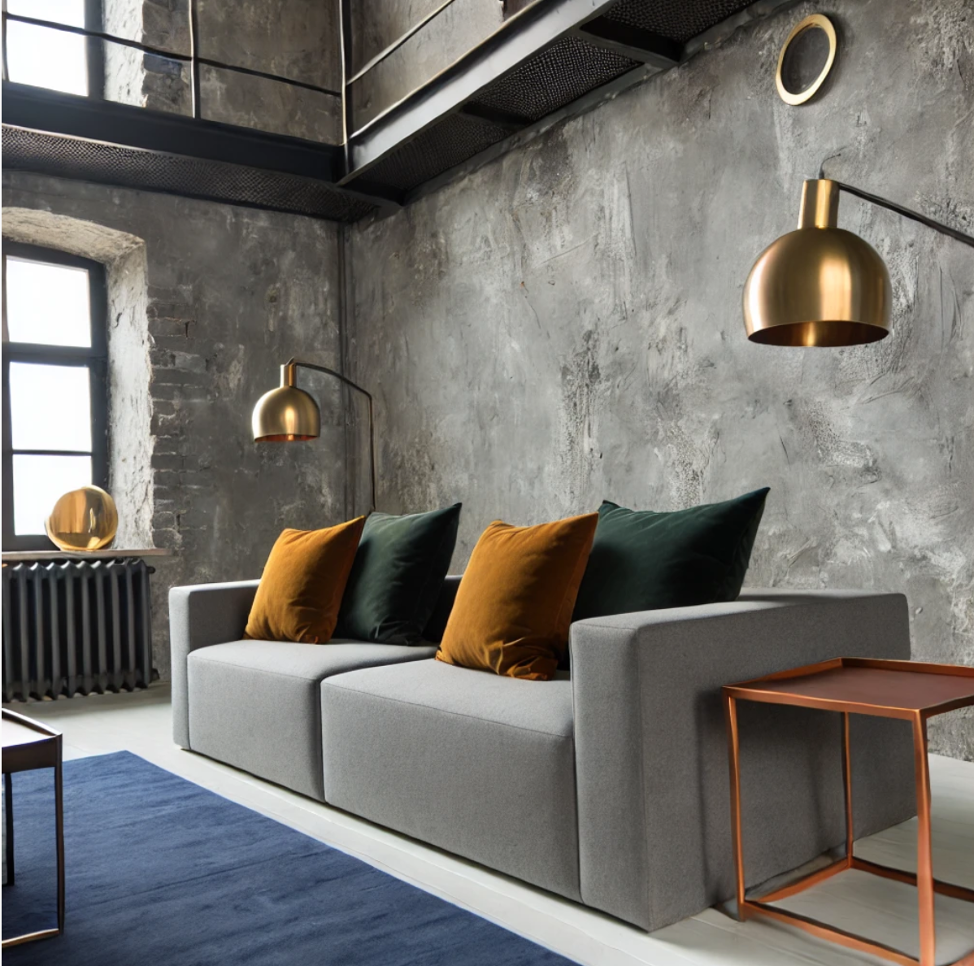
The color palette of industrial loft style has traditionally been neutral, relying on grays, whites, browns, and blacks to create a monochromatic scheme. In 2025, these neutral tones remain at the forefront, but they are given more depth with the introduction of warmer undertones and bold accents.
Rich, earthy colors like deep olive, burnt orange, and navy blue can be used as accent colors in upholstery, wall art, or rugs to add depth and warmth. Metallic finishes like brass or gold also add warmth and refinement to the otherwise cool, industrial aesthetic.
Pro tip: Don’t be afraid to introduce a pop of color through your décor or furniture. Deep jewel tones like emerald green or navy blue can add sophistication while maintaining the industrial vibe.
8. Plants and Greenery: Bringing Life to the Industrial Space
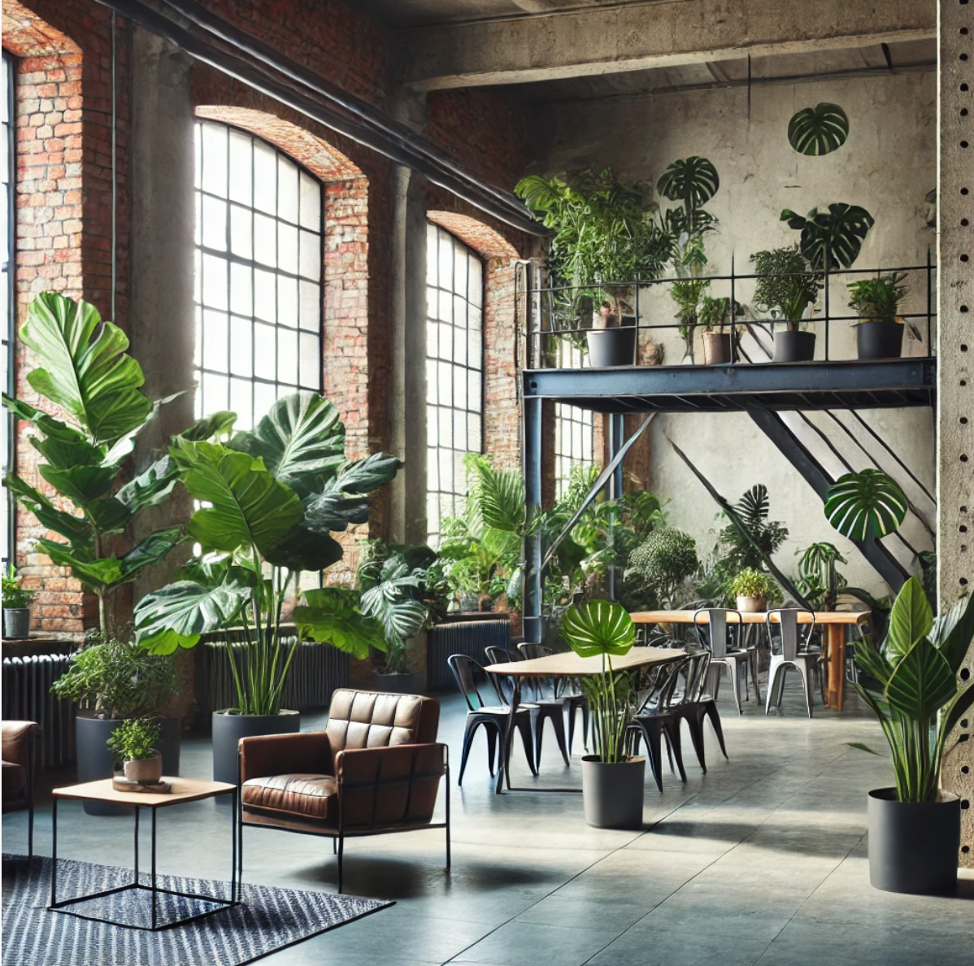
While industrial lofts are often associated with cold, hard materials like metal and concrete, adding greenery is a great way to bring life and warmth into the space. In 2025, large indoor plants like fiddle-leaf figs, snake plants, or monstera are popular choices for softening the hard edges of industrial interiors.
Hanging plants, succulents, and vertical gardens also work well in loft-style spaces, adding a touch of nature to the urban environment. Large windows typically found in lofts allow for plenty of natural light, making it easier to keep your plants thriving.
Pro tip: Use large planters or hanging pots to strategically place plants in areas where they can soften the overall look of the room, such as next to metal furniture or against a brick wall.
9. Repurposed and Vintage Décor: A Nod to the Past
Industrial loft style is often about sustainability and repurposing materials. In 2025, vintage and reclaimed items play a significant role in adding character and authenticity to industrial spaces. Items like old factory carts, reclaimed wood beams, or vintage light fixtures can be repurposed and integrated into the design.
You can also look for vintage-inspired décor pieces, such as antique mirrors, worn leather furniture, or industrial-style shelving, to add history and a sense of craftsmanship to your space.
Pro tip: Mix modern and vintage décor to create a dynamic and lived-in feel. Repurposed factory elements, vintage furniture, or old-fashioned industrial tools as décor pieces can add unique charm and authenticity to your loft.
Final Thoughts
The industrial loft style in 2025 combines the best of both worlds: the raw, rugged appeal of urban materials and the refined elegance of modern design. By balancing exposed materials, sleek furniture, and thoughtful lighting, you can create a space that feels both grounded in history and forward-thinking. Whether you live in a true loft or simply want to incorporate industrial elements into your home, these design principles will help you achieve a stylish, comfortable, and functional living space.

